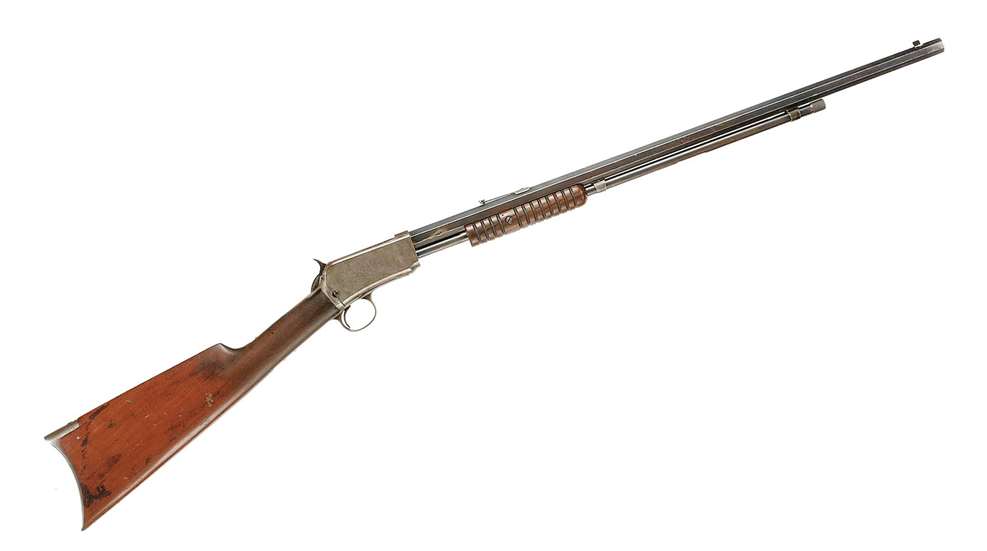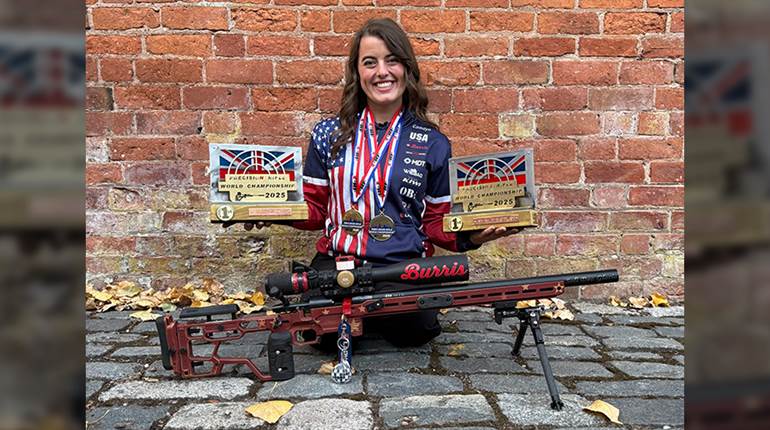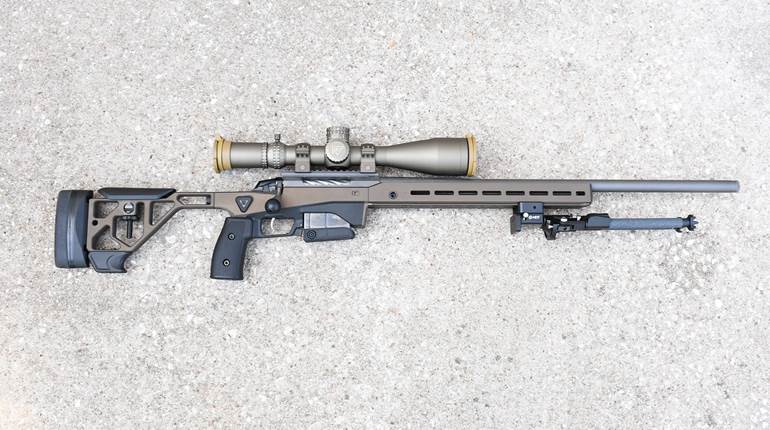
This feature article, “I Have This Old Gun,” appeared originally in the November 2005 issue of American Rifleman. To subscribe to the magazine, visit the NRA membership page and select American Rifleman as your member magazine.

These three images (above) actually represent two Model 1890 slide-action rifles in different condition factors.
Model 1890 fans will immediately recognize these guns as Second Models with the takedown screw visible on back of the case-colored receiver. While manufactured only two years apart (1896 and 1898), there is a huge difference in values, based on the original condition factors. The rifle at the top of the page with the corresponding close-up image on the left has very few original receiver case colors left, having mostly worn and faded with a few traces of original finish remaining. Observe finish wear on the sharp edges of barrel, including wrench marks, and how the color of the stock varies, probably indicating sanding and possible refinishing.
The close-up image on the right is a different Model 1890 in much better condition. The color-casehardening of steel or iron parts is achieved by baking the selected gun parts at more than 800 degrees Celsius, while packed tightly in a charcoal and bonemeal mixture. Once the necessary temperature has been reached, the individual components are removed from the baking crucible and quenched with cold water. The resulting finish is very thin, but as you can see from this gun, very colorful. Superior original case colors (note the vivid blue, green and brown swirling colors) remain on the receiver, trigger guard and hammer. Also observe the near-perfect bluing and lack of finish edge wear on the barrel, slide and magazine tube.
Even though almost 850,000 Model 1890 rifles in various .22 rimfire calibers were manufactured between 1890 and 1932 (retail was $16 until 1917), only a handful remain in this type of superior original condition. Most were heavily used and possibly abused, like the one on the left. Moral to the story: most common guns are not rare. Rather, superior original condition is rare, desirable—and expensive!
—S.P. Fjestad























![Winchester Comm[94]](/media/1mleusmd/winchester-comm-94.jpg?anchor=center&mode=crop&width=770&height=430&rnd=134090756537800000&quality=60)
![Winchester Comm[94]](/media/1mleusmd/winchester-comm-94.jpg?anchor=center&mode=crop&width=150&height=150&rnd=134090756537800000&quality=60)












